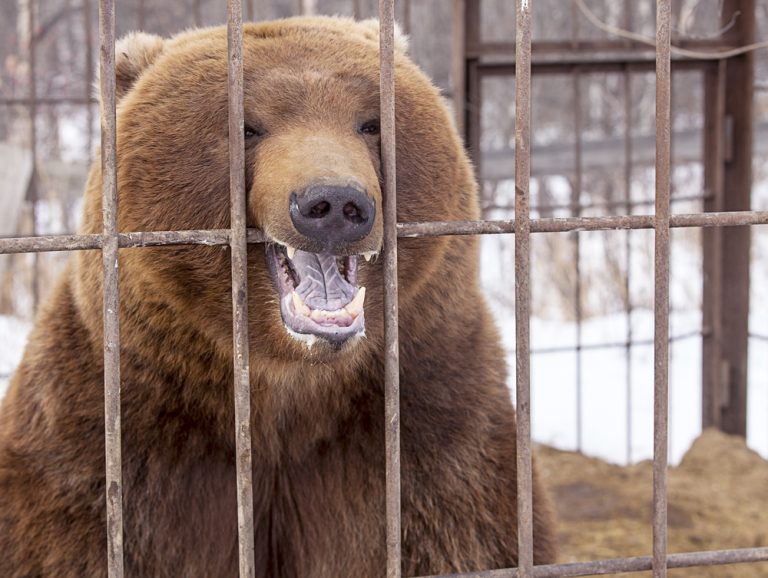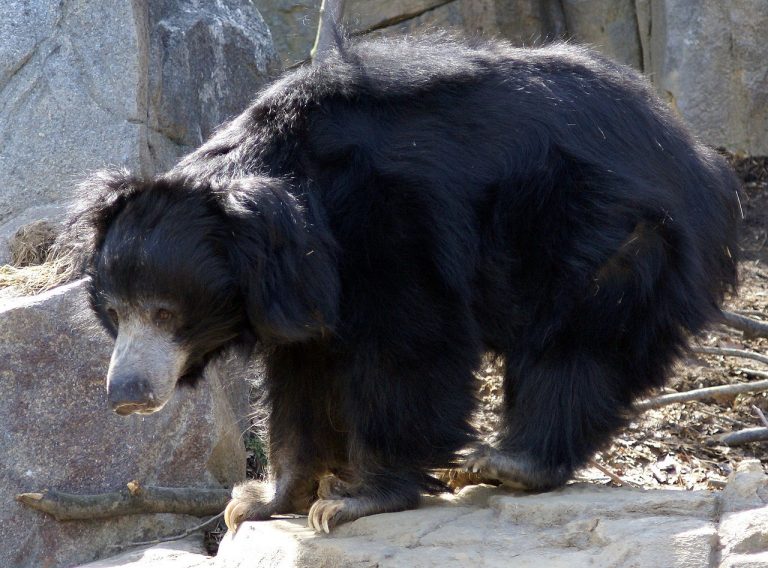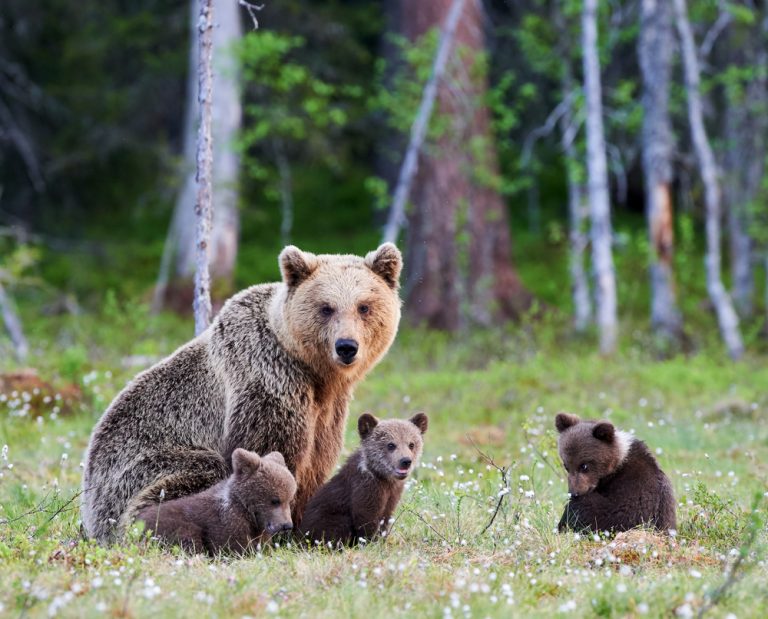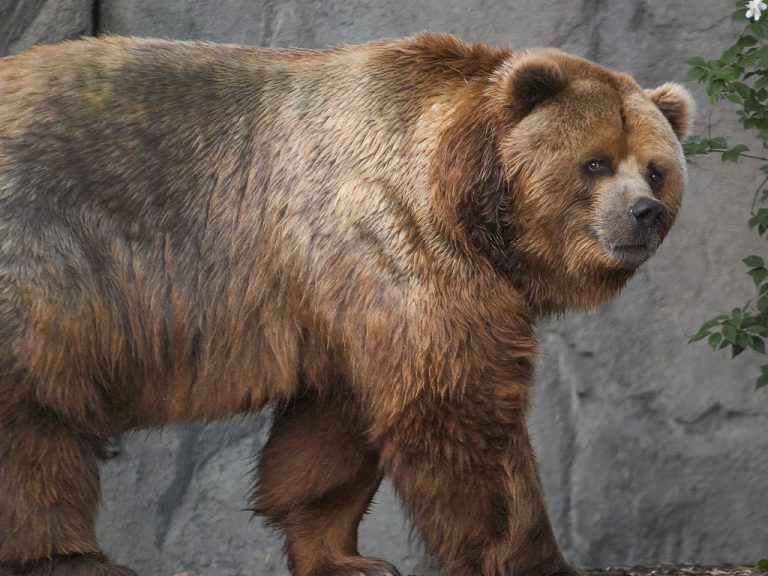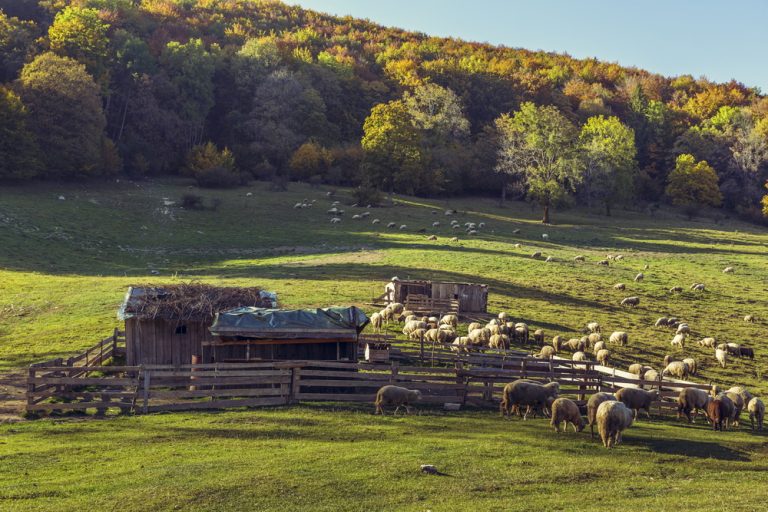Species Profile: The Cantabrian Brown Bear
Meet the Cantabrian Brown Bear, one of the most heavily protected bears on the Planet.
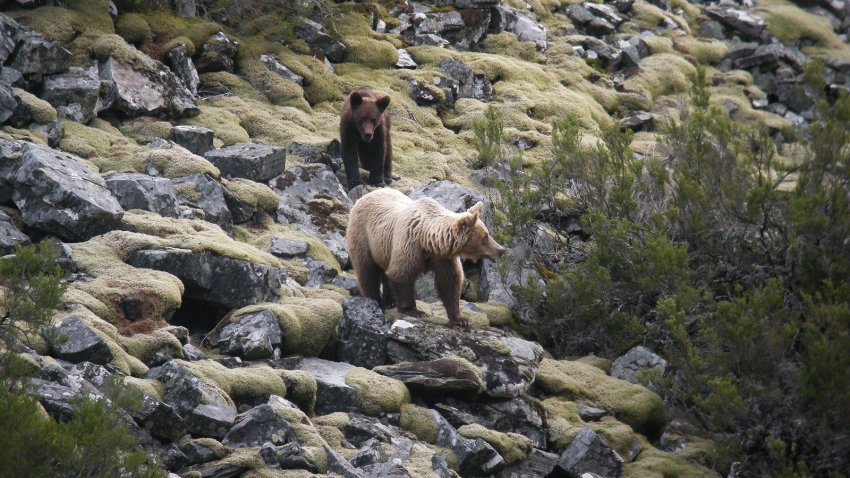
The Cantabrian Brown Bear is a population of Eurasian brown bears dwelling in the Cantabrian Mountains, Spain.
They are generally medium to moderately large sized bears that vary in color from different shades of brown to even a few blonde individuals
These are timid, cautious bears that were hunted almost to extinction. As a result, they avoid human contact whenever possible.
The Cantabrian brown bear is a subspecies of the brown bears so it’s classified as Least Concern by the International Union for Conservation of Nature (IUCN). However, it’s cataloged as in Danger of Extinction on the Spanish Red List of Endangered Species.
Nevertheless, at present their populations are growing slowly but steadily. Largely thanks to the efforts of conservation groups especially the Fundacion Oso Pardo (FOP), also called the Brown Bear Foundation in English. They help to protect the bears from poaching and they also facilitate compensation for farmers that suffer damages caused by wolves and bears.
1)Scientific Name
Ursus Arctos Arctos
2) Scientific Classification:
Kingdom: Animalia
Phylum: Chordata
Class: Mammalia
Order: Carnivora
Family: Ursidae
Genus: Ursus
Species: Ursus Arctos Arctos
3) Life Expectancy
The Cantabrian brown bear lives, at an average, between 25 and 30 years in the wild.
4) Average/Maximum Length
These bears measure from 1.6 to 2 meters in length and between 0.90 and 1 meter (3 feet) at the shoulder.
5) Average/Maximum Weight
Adult females weigh averagely 85 to 150 kg (187 to 331 lbs.) and males 115 to 200 kg (254 to 441 lbs.)
6) Maximum Running Speed
About 15.7 mph (25 kph).
7) Interaction With/Danger To Humans
They are surprisingly timid towards humans and they will avoid people as much as possible.
8)Reproduction Details
Females of the collective brown bear species go into oestrus (heat) once every three to four years. After mating with the male, the bears of both sexes display no sexual interest anymore.
Female bears are not fertilized immediately. Rather, they have delayed implantation. Fertilized egg(s) float around in the female’s uterus for six months. If she gains enough weight to go through winter hibernation, the fetus will implant and the cubs are born about eight weeks later.
9)Diet/Hunting Pattern Of The Cantabrian Brown Bear
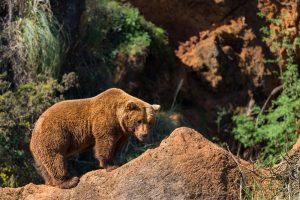
Like other Eurasian brown bears, these bears were historically carnivorous. In fact, at least 80 percent of their diet was made up of meat.
However, habitat loss means that their ability to find meat decreased significantly from the Middle Ages to date.
Today, just about 10 percent of their diet is meat. The other 90 percent is composed of vegetative matter like berries, fruits, etc.
10) Alternative Names
Osu
11) Population and Conservation Status
The Cantabrian brown bear narrowly escaped extinction. During the tenure of the dictator, General Francisco Franco, the bear population suffered harsh habitat degradation and loss. Poaching was rampant, large expanses of land was converted to plantations, and people were allowed to hunt the bears.
By the 1960s, their population dropped to less than one hundred. But by 1973, they received full protection from the ruling government then.
Today, the threats these bears face are still many and they include:
- Inbreeding. Especially in the smaller eastern population there is evidence of genetic complications and birth defects
- Extreme philopatry. The females bears don’t like to move around and in fact they are strongly inclined to remaining in the same location all year round. This affects the probability of meeting and mating with male bears.
- EU’s BSE laws. These laws stipulate that carcasses must be removed immaculately from the countryside. However, this is a problem for the bears as they need this kind of meat to store up fat reserves ready for winter.
- Human Intrusion. Human developments like agriculture and road construction fragment and disturb the easy movement and population growth of the Cantabrian brown bear.
- Persistent Poaching. Each year, despite the efforts of the authorities, people still poach the bears.
Though this bear is listed with other brown bears as a Least Concern Species, the Spanish Red List of Endangered Species lists it as in Danger of Extinction. The European Mammal Assessment lists it as Critically Endangered.
There is a maximum fine of €300,000 for killing a Cantabrian brown bear.
12) Ancestry and History
Experts believe brown bears as a whole originated in Asia. Thereafter, they spread across the Northern Hemisphere, moving across much of the Eurasia and North America.
Though an initial assessment in 1914 considered the Cantabrian brown bear as a distinct subspecies, further phylogenetic and mitochondrial DNA research prove that it is not a separate subspecies.
Their closest relatives are the remnant population of brown bears in southern Sweden.
13) Distribution And Habitat
These bears once roamed as far as the Iberian peninsula, but today, human activities limit them to two isolated groups in the Cantabrian mountains in Northern Spain.
Their present territory is in parts of Asturias, León and Lugo (Galicia) in the west and, Palencia, León, and Cantabria in the east. Unfortunately, the two groups are separated by about 40 km distance.
Therefore the problem of inbreeding persists.

